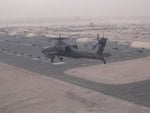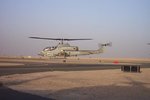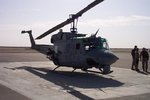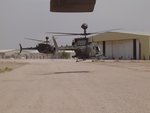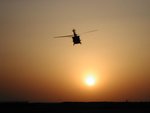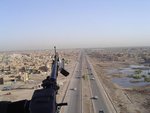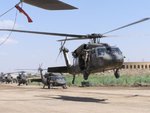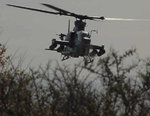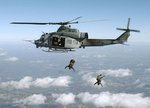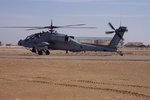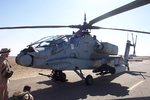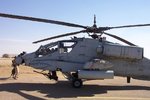Well obviously my fav is the UH-60L Blackhawk because I fly it everyday but what about you guys, what do you think is the best Helicopter? Here are some pics that I have taken of Helicopters here in Iraq. There are also many more helos that I could have put in the poll but I think it was a good start and could get it going.
UH-60L Blackhawk
UH-60L Blackhawk
Since October of 1989, Sikorsky has been producing the UH-60L BLACK HAWK helicopter with 24 percent more power than the UH-60A model. The T700-GE-701C turbine engines enable the UH-60L to take advantage of the new 3,400 shp improved durability main gearbox.
The UH-60L was further modified with SEAHAWK flight control components and an increase in tail rotor pitch. These modifications allow the aircraft to take full advantage of available engine power while extending the flight control component fatigue lives in excess of 5,000 hours.
As an example of the benefits of this upgrade, a modified UH-60L BLACK HAWK is capable of airlifting a 9,000 pound external payload, 60 nm under hot day conditions: an increase of 3,000 pounds over the UH-60A model.
In response to the growing weights of external loads such as weaponized M1036 High Mobility Multipurpose Wheeled Vehicles (HMMWV), the Army increased the external hook capacity to 9,000 pounds for a gross weight of 23,500 pounds. This improvement, for example, allows organic UH-60L aviation resources to more closely match the lift requirements within the Light Infantry Divisions.
Sikorsky continues to demonstrate the increased payload capacity of the latest BLACK HAWK model. Pictured on the front is the external lift of an AVENGER HMMWV weighing 8,750 pounds.
The world's most advanced twin-turbine military helicopter. The UH-60L is powered by twin General Electric T700-GE-701C turboshafts rated 1,890 shp each, plus the 3,400 shp Improved Durability Gearbox and heavy-duty flight controls developed for the naval S-70B SEAHAWK. It is cleared to 22,000 lbs. gross weight, and can carry 9,000 lbs. external loads. New wide-chord composite main rotor blades and further engine upgrades are available for future performance requirements.
An External Stores Support System (ESSS), consisting of removable four-station pylons, multiplies BLACK HAWK roles. With the ESSS, the UH-60L can carry additional fuel tanks for extended range in self-deployment up to 1,150 nautical miles. For anti-armor missions, it can carry 16 HELLFIRE missiles on the pylons, or a variety of other ordnance, including guns and rockets.
Characteristics: Performance at Missions Gross Weight
Maximum Cruise Speed (MCP)
4000' 95o F 152 kts
2000' 70o F 159 kts
SLS 155 kts
VNE 193 kts
Vertical rate of climb (95% MRP)
4000' 95o F 1,550 fpm
2000' 70o F 2,750 fpm
SLS 3,000+ fpm
Service ceiling (ISA day) 19,150 ft
Hover ceiling (MRP-OGE)
95o F day 7,650 ft
70o F day 9,375 ft
ISA Day 11,125 ft
Engines
Number of engines - Two
Model T700-GE-701C Turboshaft
Takeoff Power (per engine) 1,890 shp
Weights
Weight empty 11,516 lbs.
Mission gross weight 17,432 lbs.
Maximum gross weight (internal load) 22,000 lbs.
Maximum gross weight (external load) 23,500 lbs.
Maximum gross weight (ferry) 24,500 lbs.
http://www.sikorsky.com/details/1,,CLI1_DIV69_ETI561,00.html

